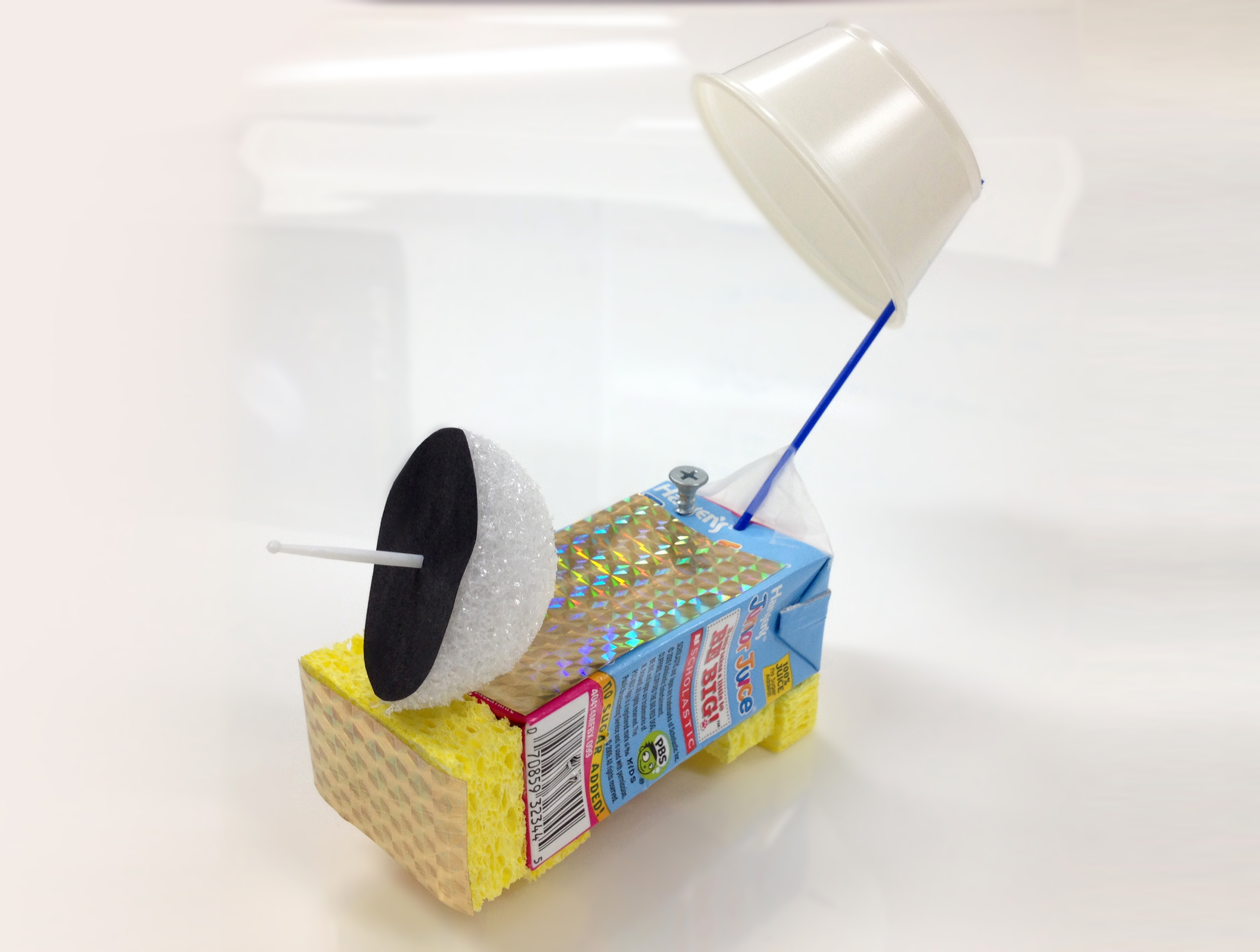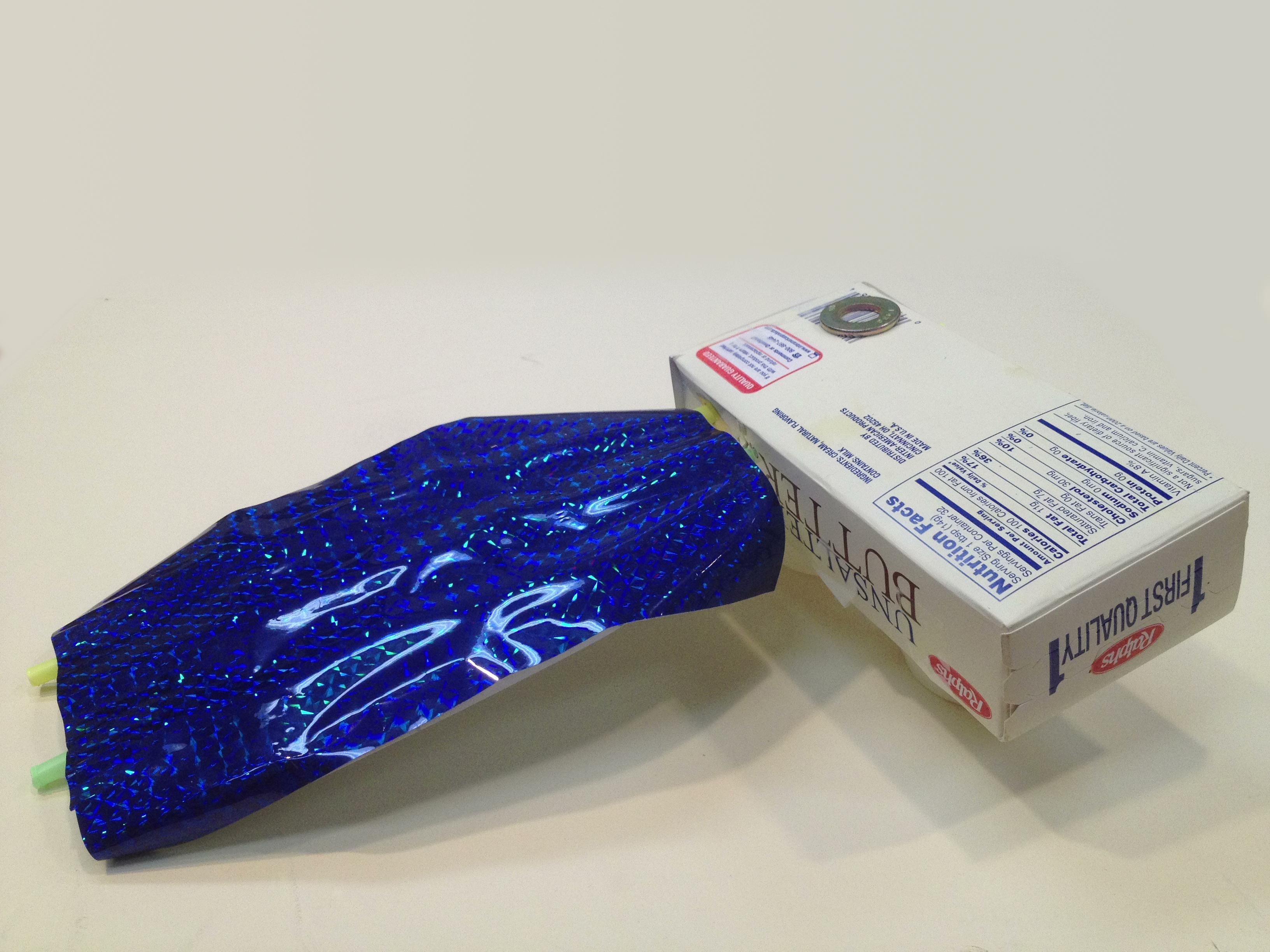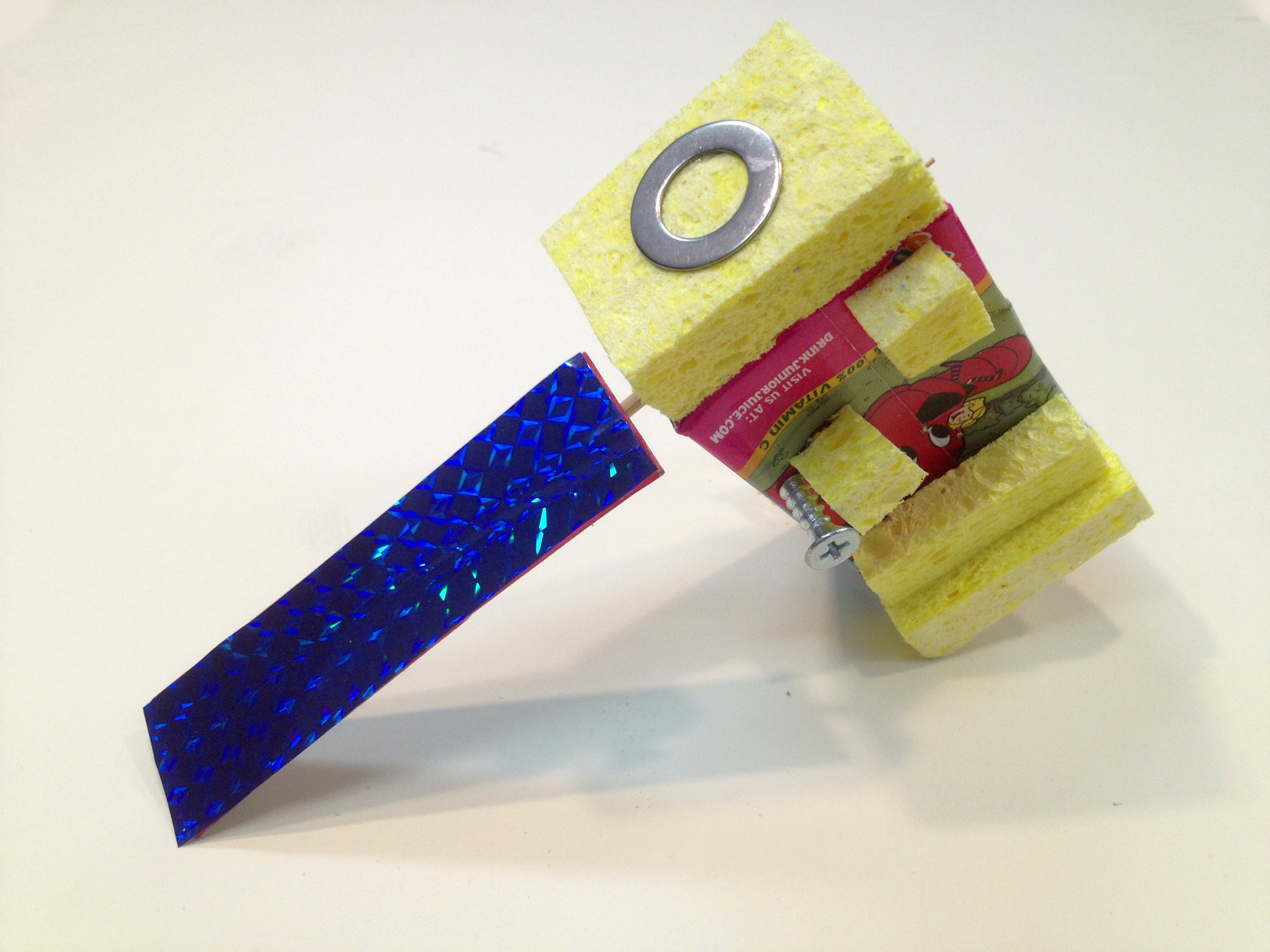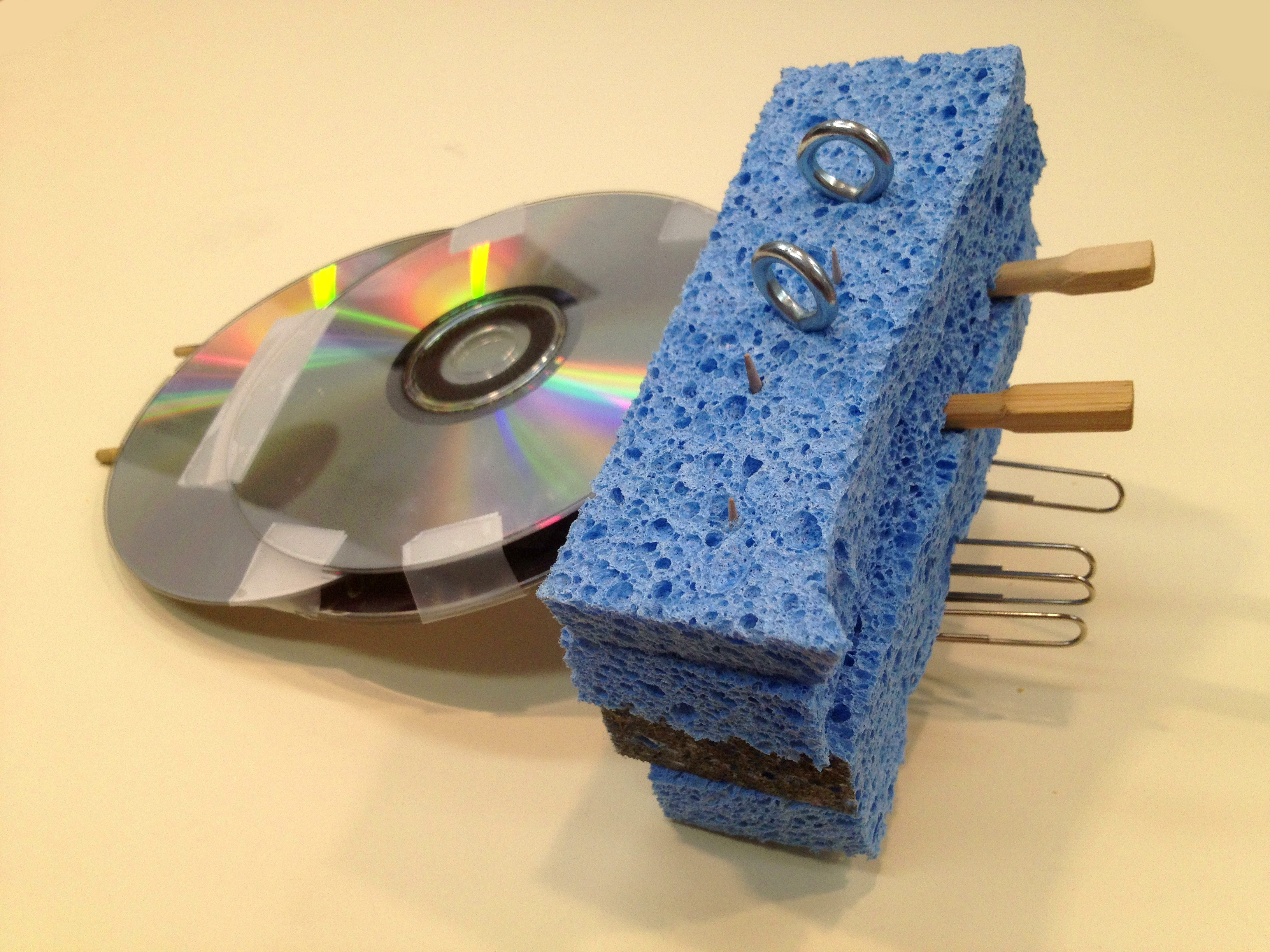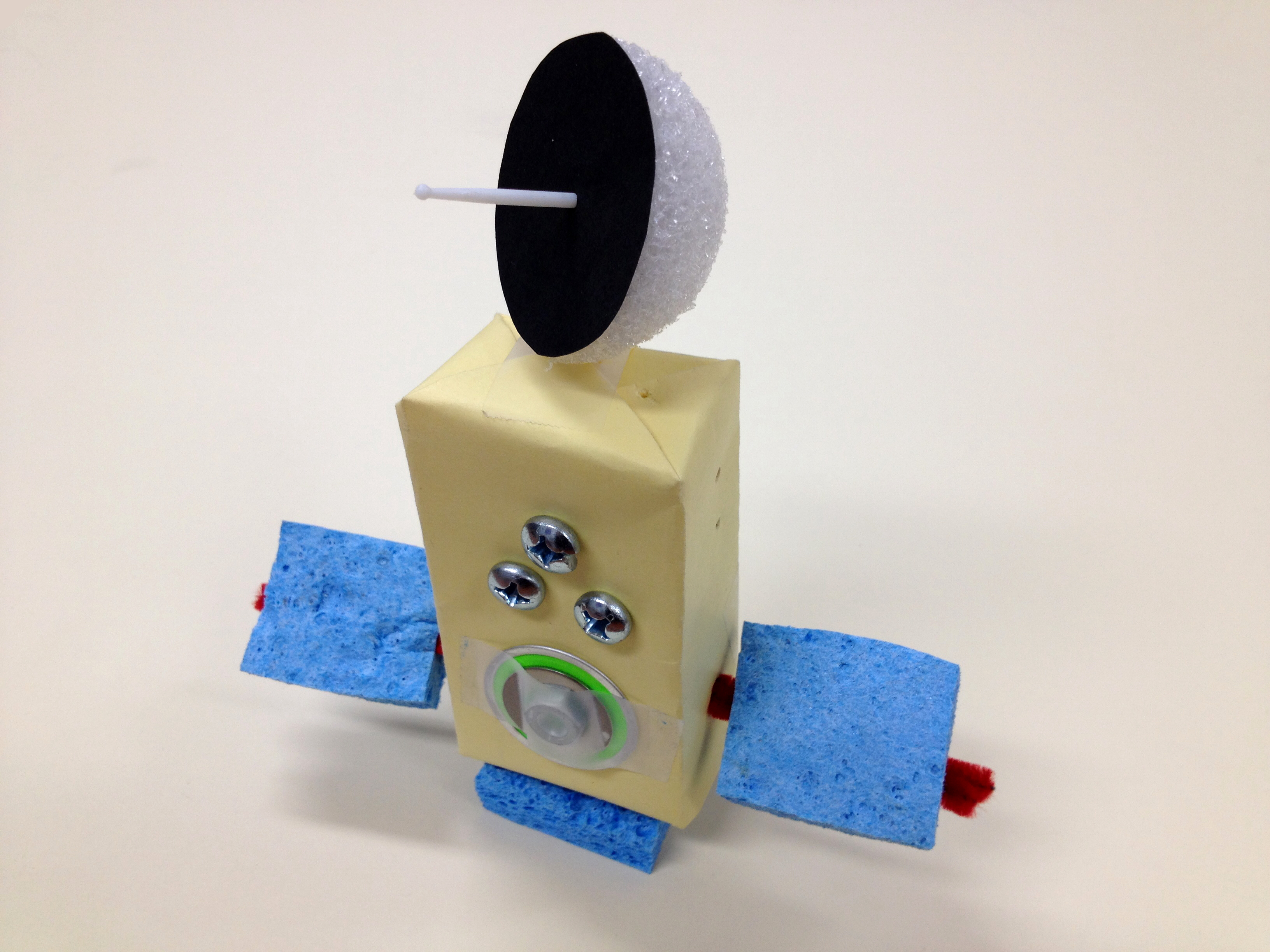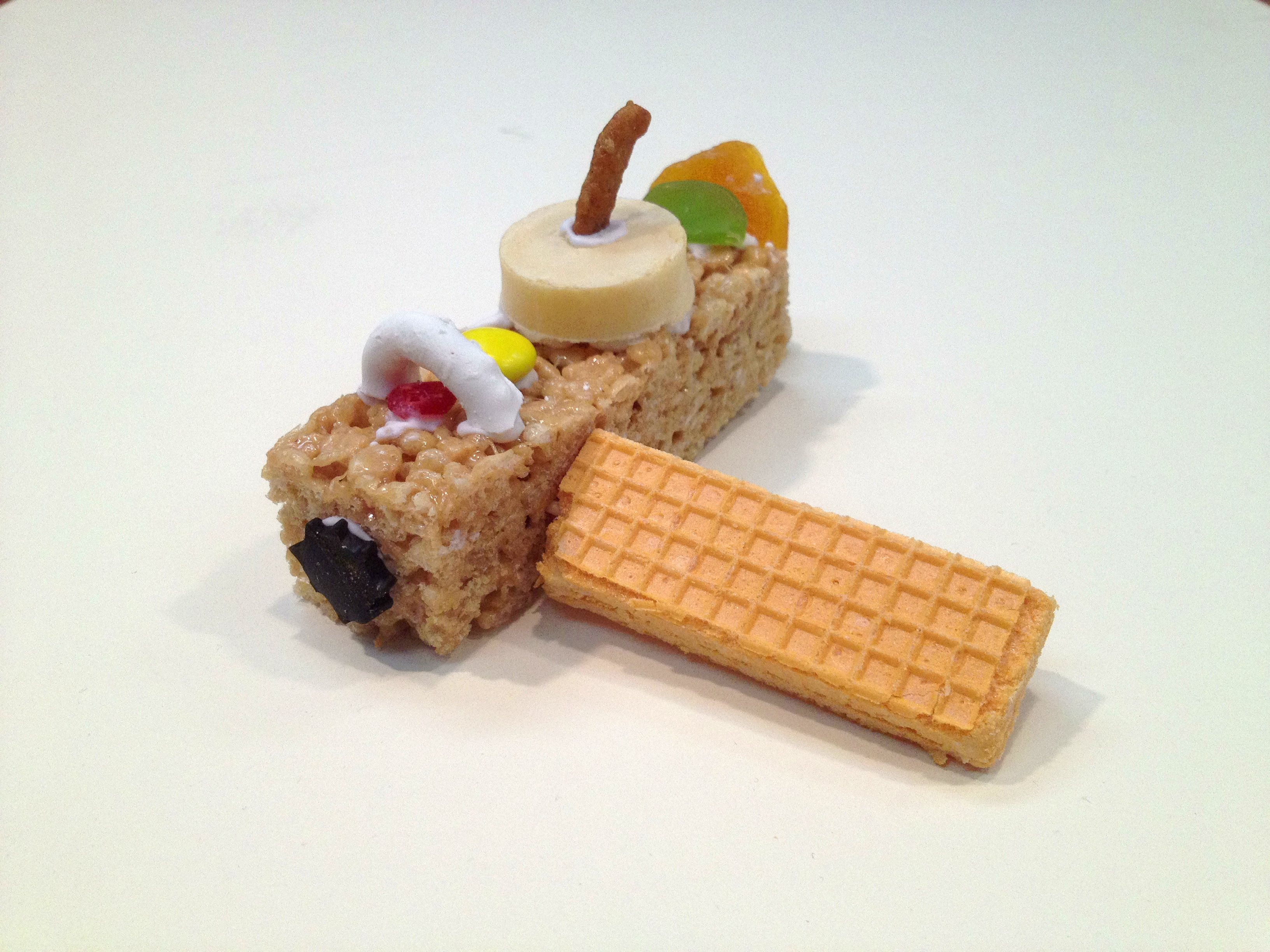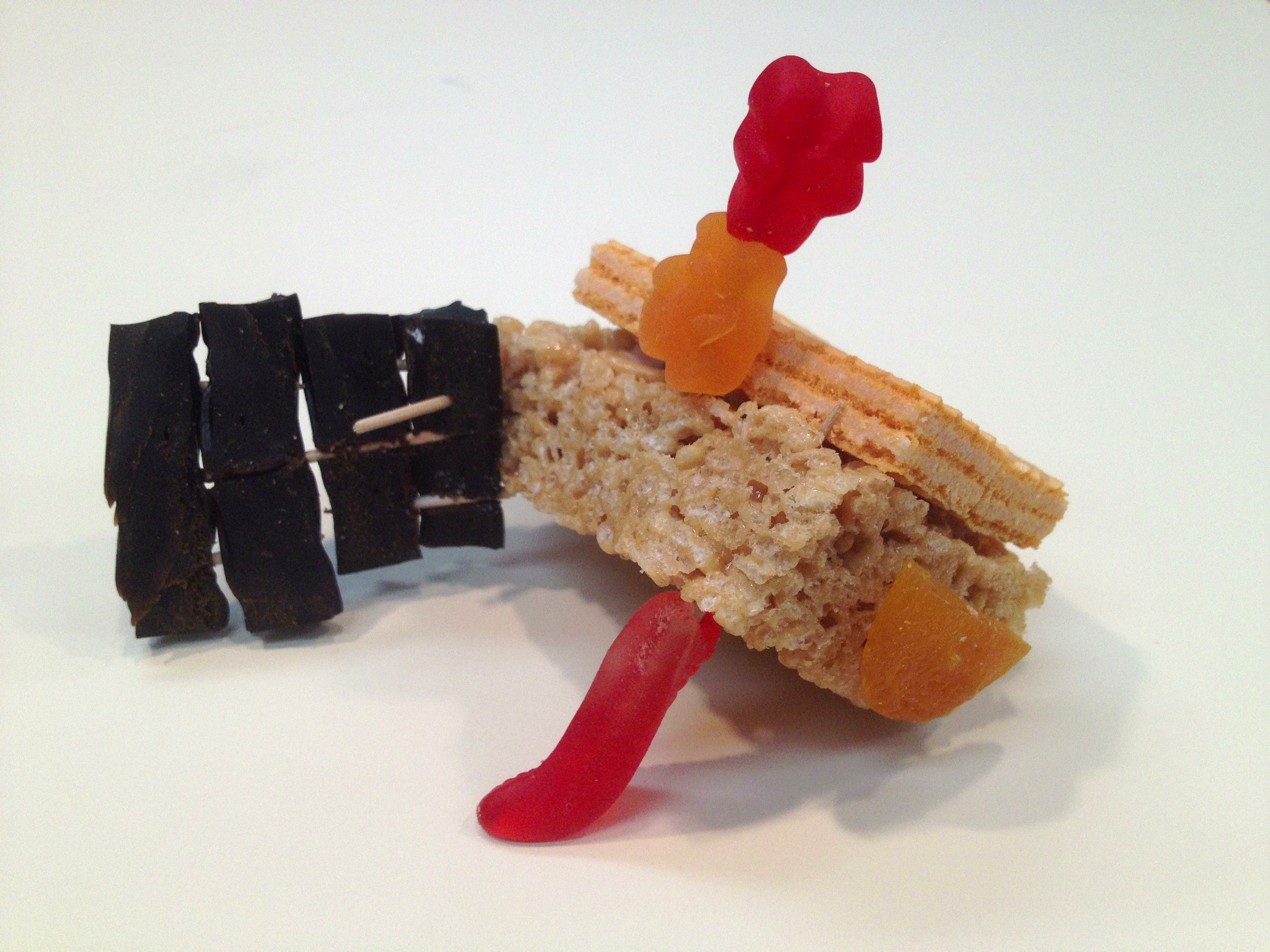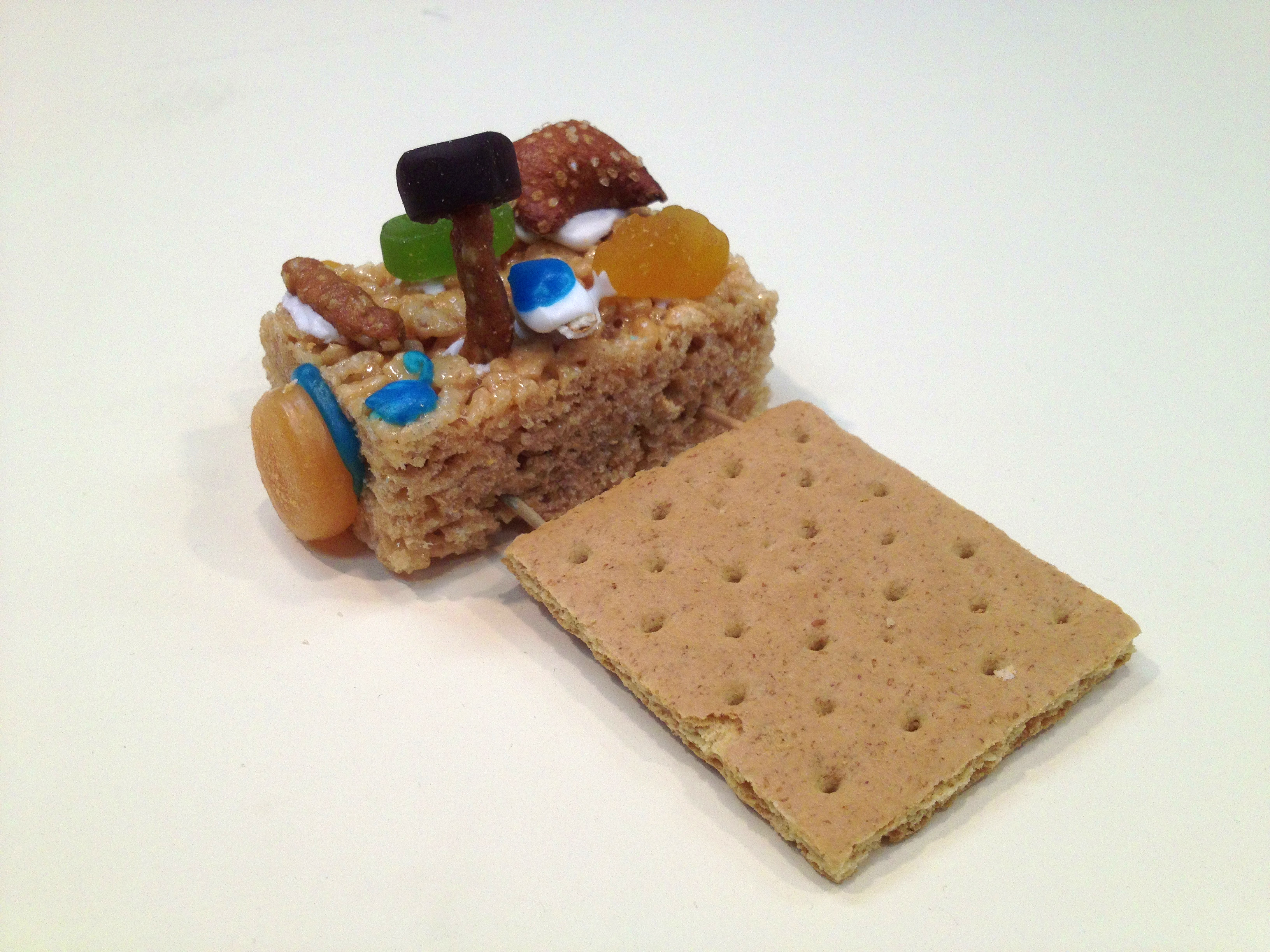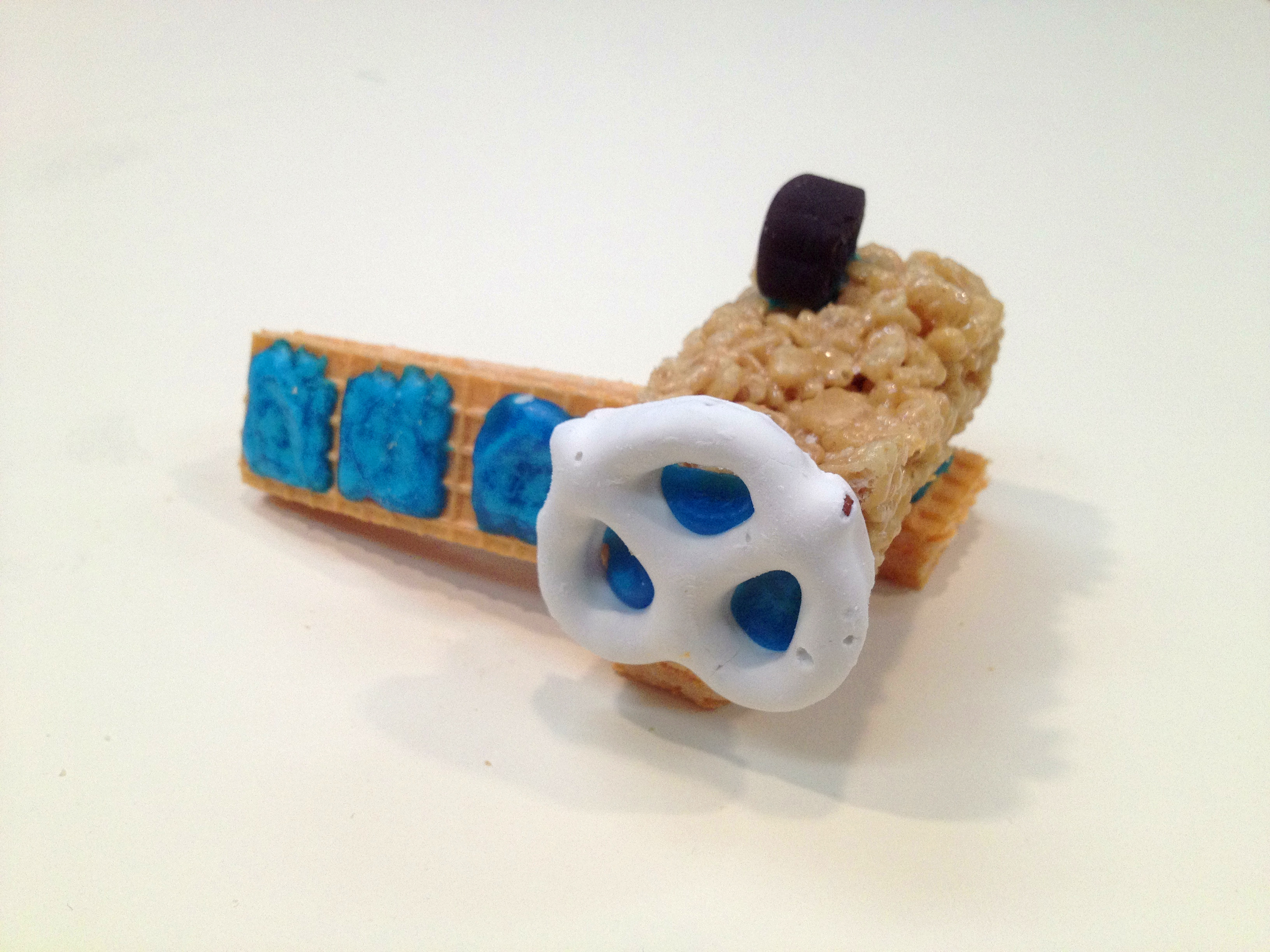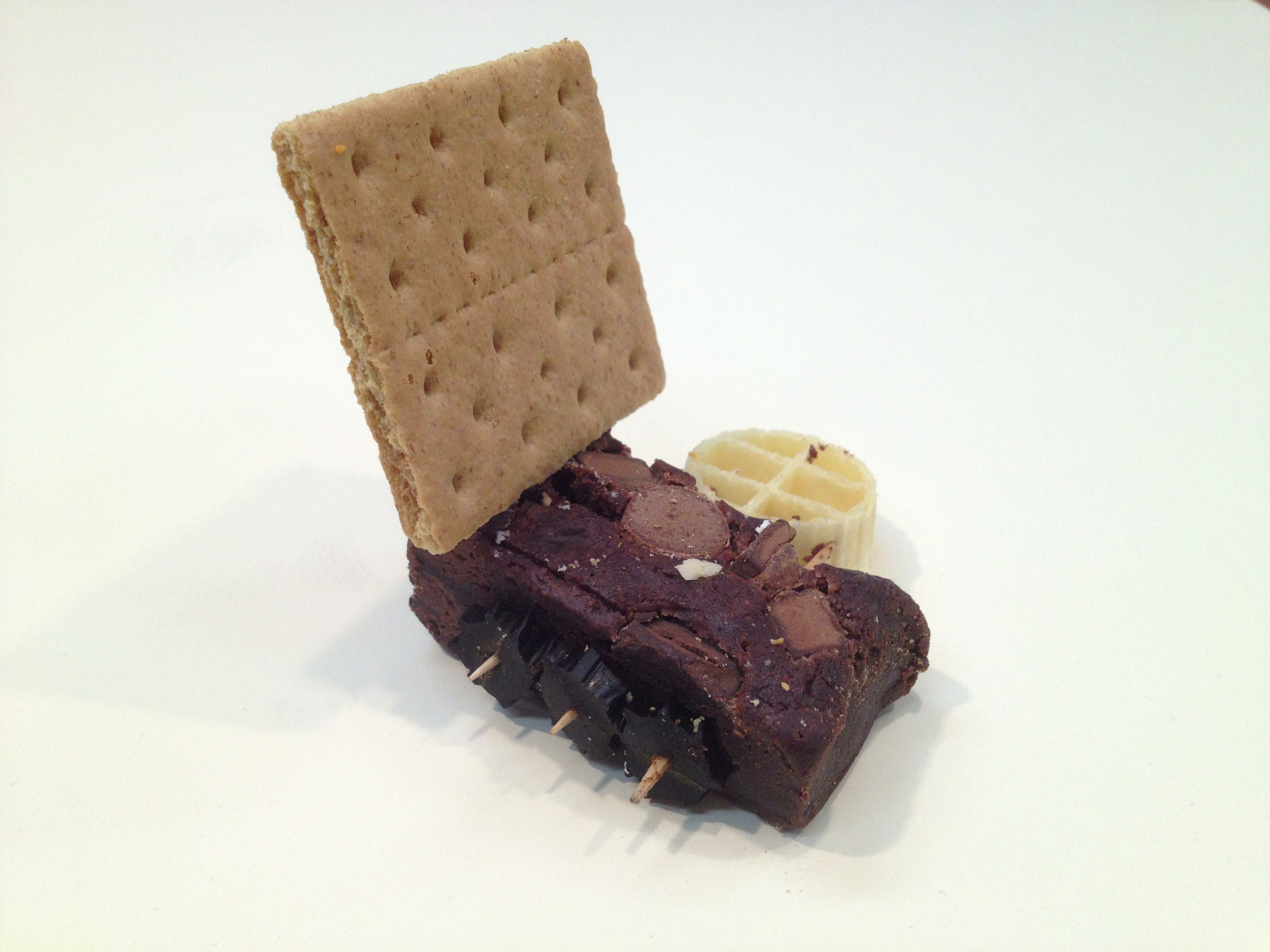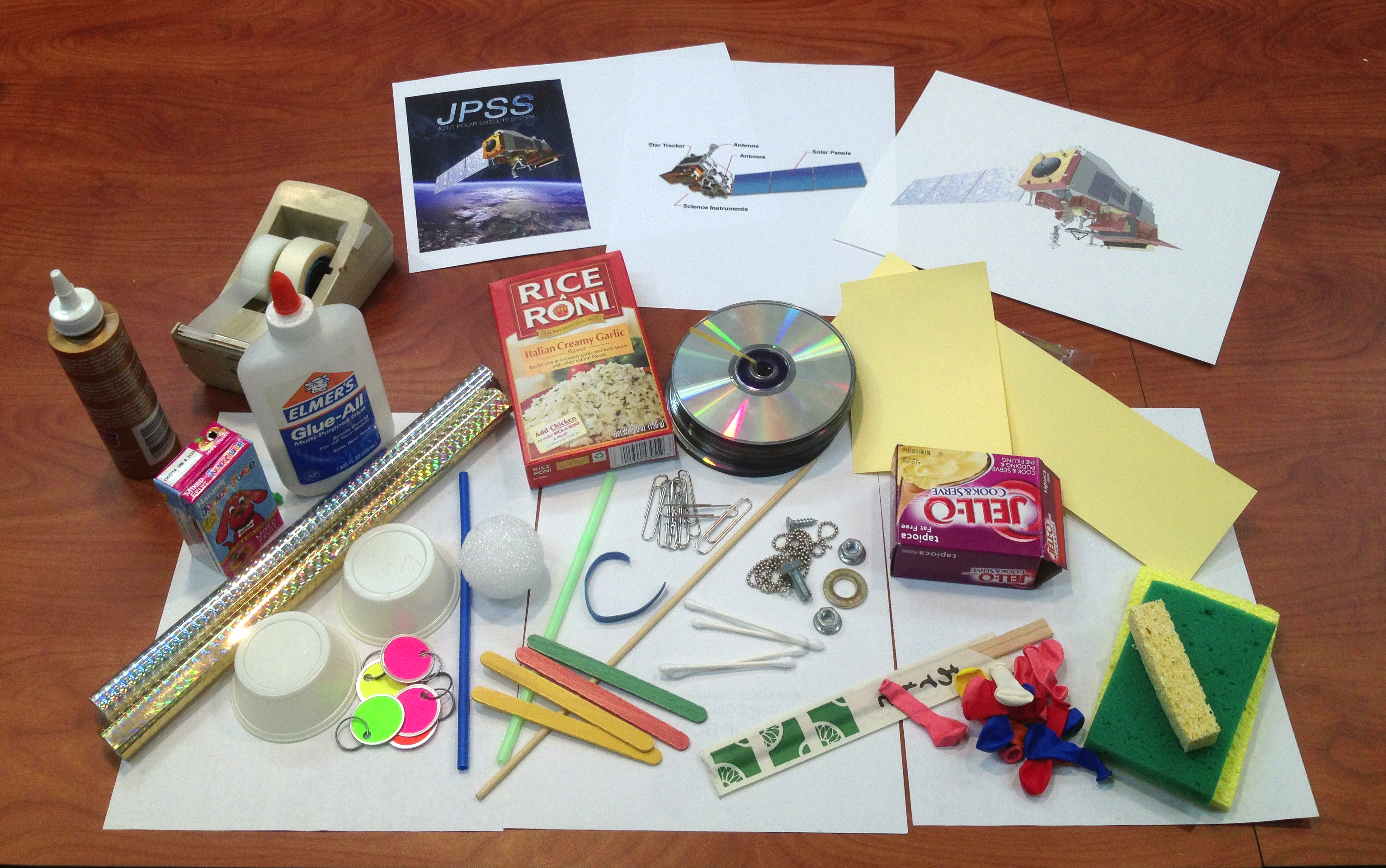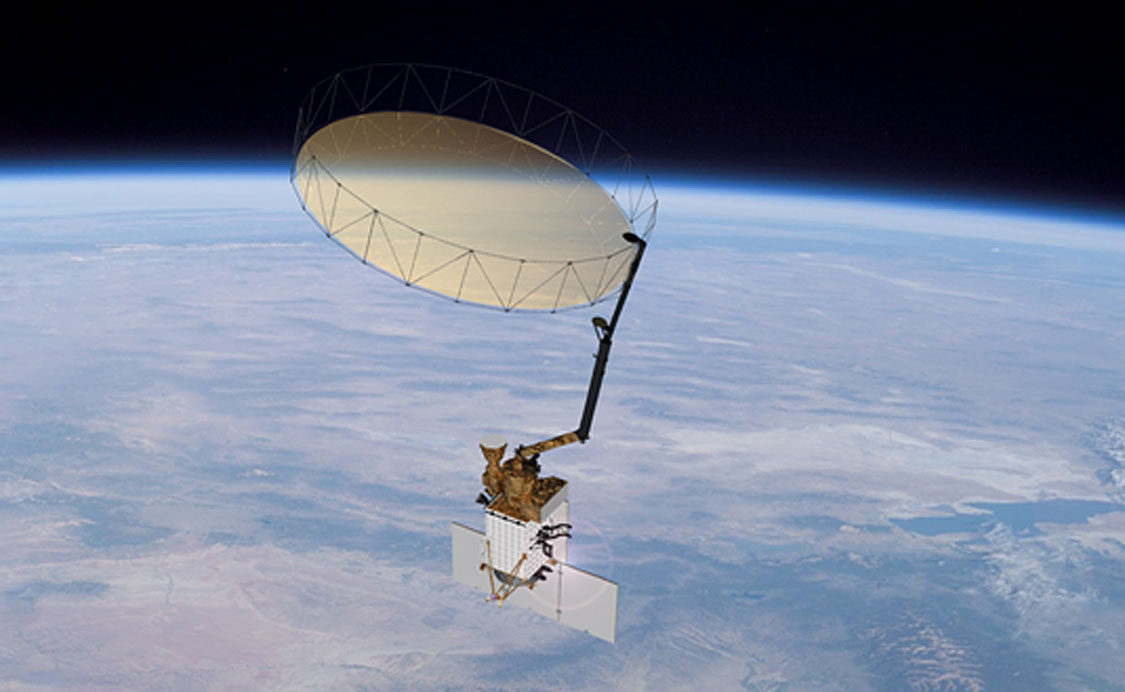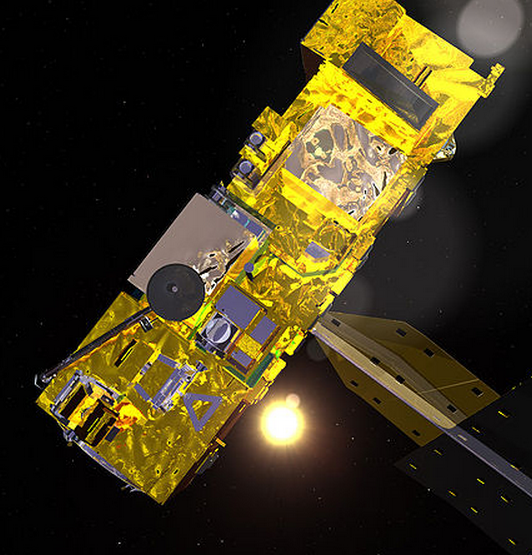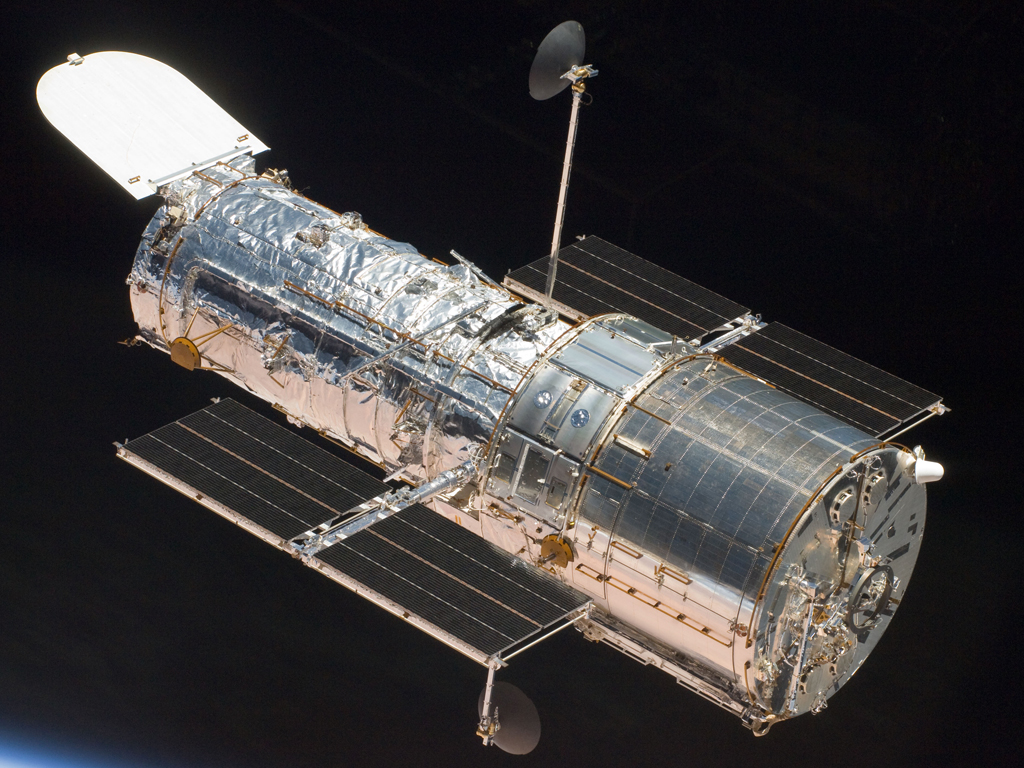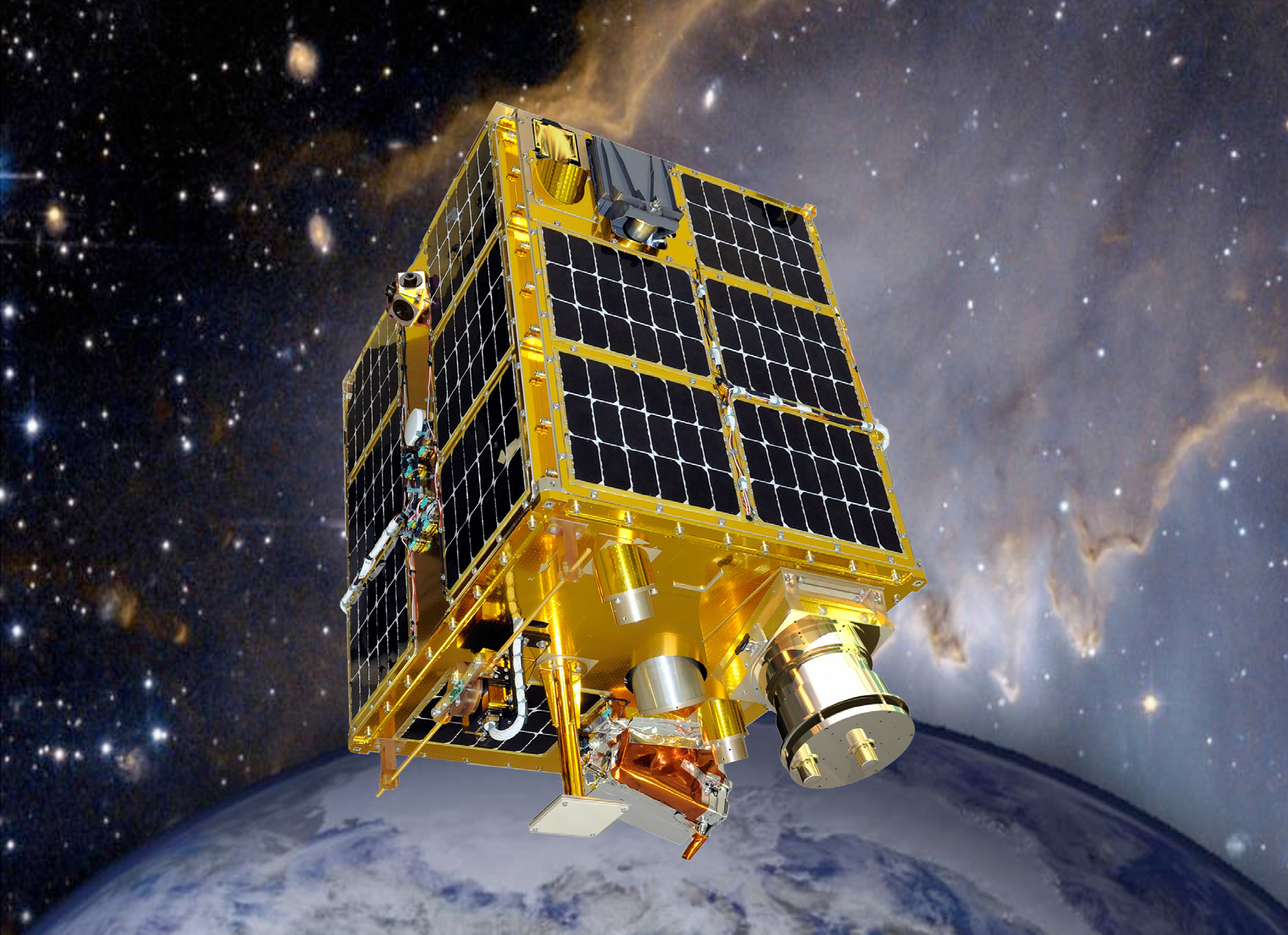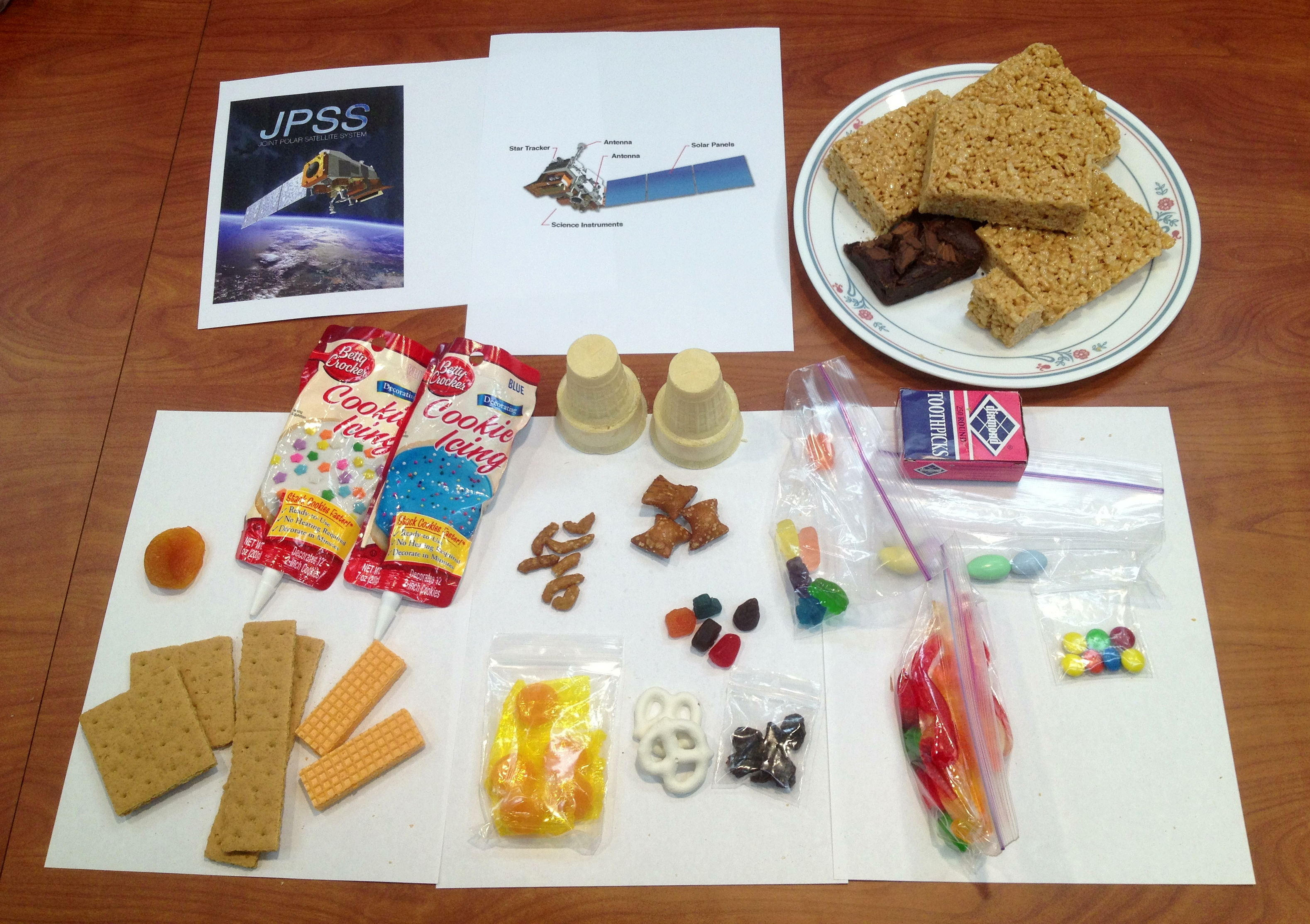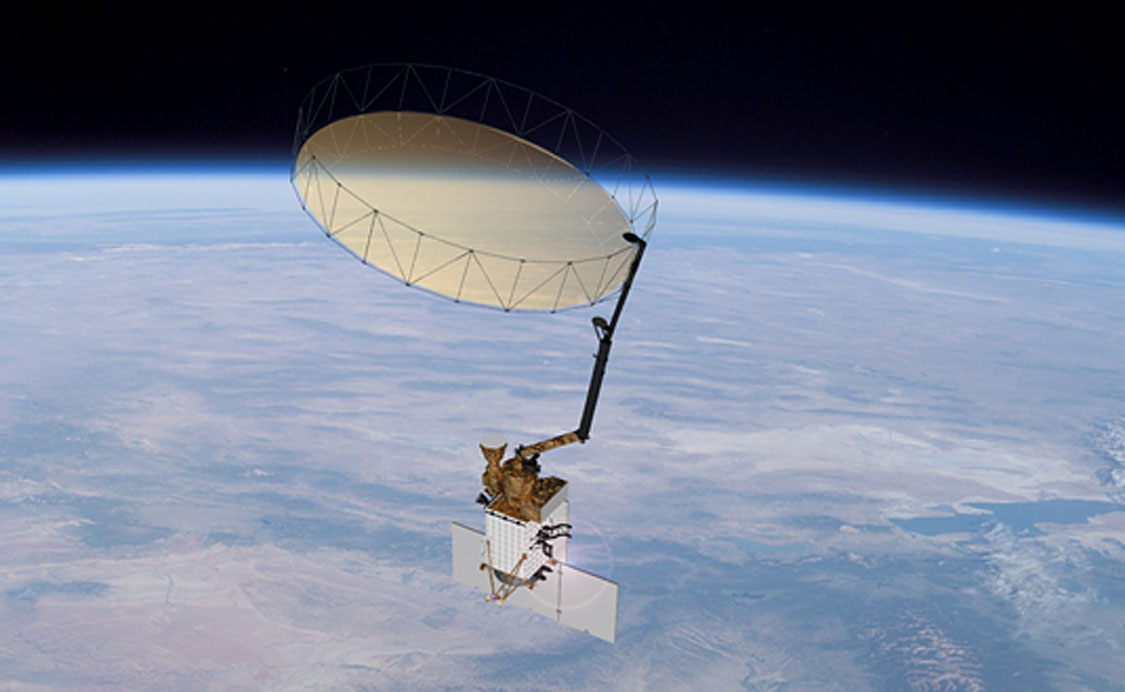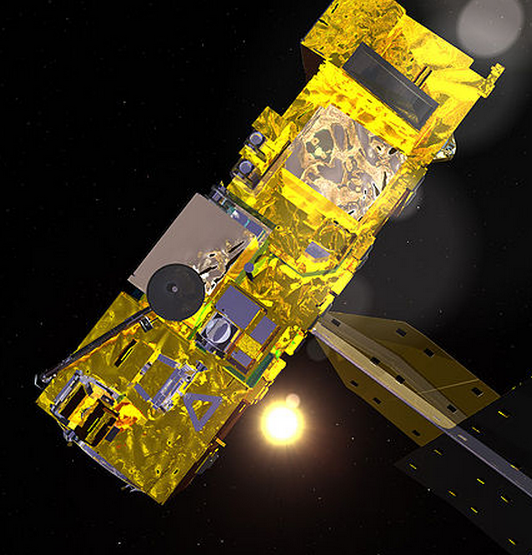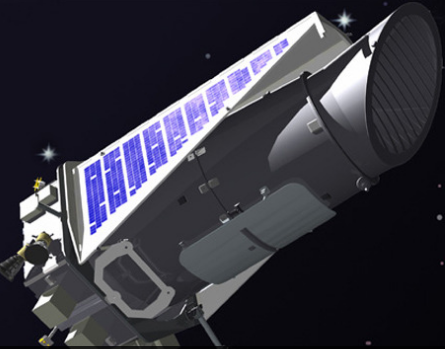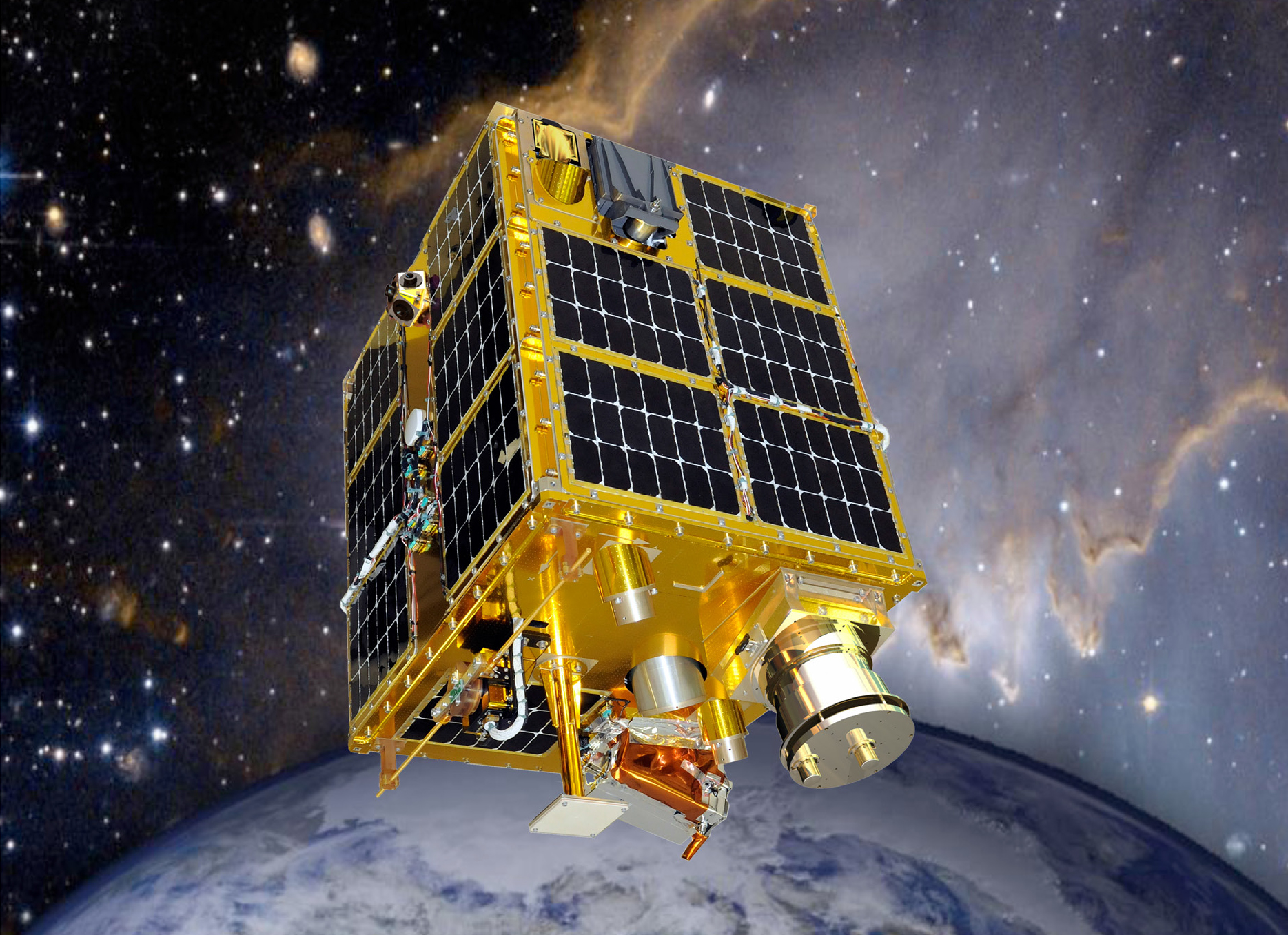Build your own spacecraft!
Build your own spacecraft!
How would you like to be the chief engineer for an important NASA mission? In this activity, you get to design the latest and greatest satellite. Your satellite could help study things happening on Earth, take pictures of planets in our solar system, keep an eye on our sun, or even find planets elsewhere in the universe!
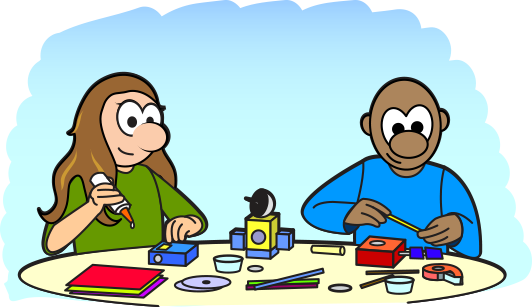
You get to decide how to make your satellite—its all up to you. While you are building your satellite, though, keep in mind that your satellite must have a couple of basic things:
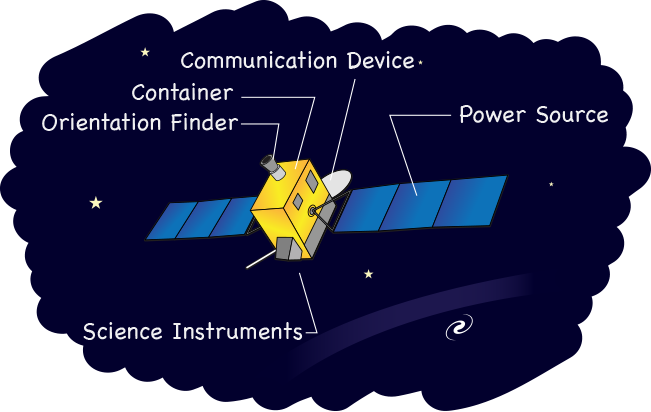 Click on the image to see what a real satellite looks like!
Click on the image to see what a real satellite looks like!
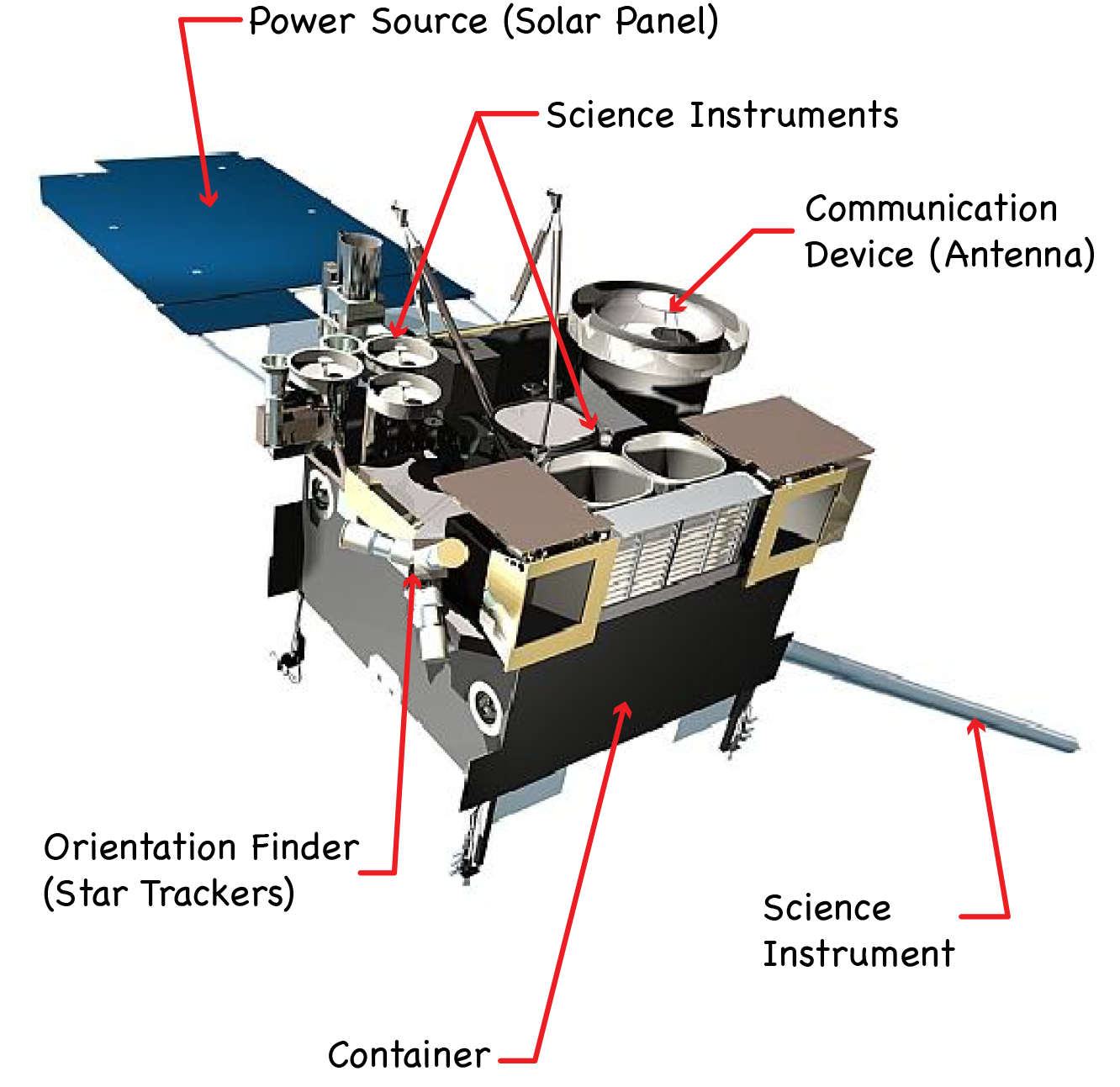 This is the GOES-N satellite. It keeps watch over weather on Earth.
This is the GOES-N satellite. It keeps watch over weather on Earth.
(Click image to return to the previous illustration)
Here's Some Examples...
Non-Edible Satellite 1
- Container: small juice box.
- Power source: battery made from a yellow sponge.
- Instruments: small plastic dish attached with a pick-up stick.
- Communication: Radio dish made with half a styrofoam ball, black construction paper, and a part of a pick-up stick.
- Orientation finder: star tracker made from a screw.
- Held together with: Scotch tape.
Non-Edible Satellite 2
- Container: small cardboard box.
- Power source: solar panels made from shiny book cover with straws and skewers.
- Instruments: Dixie cup bowls (under the box).
- Communication: antenna made from the other end of the straws.
- Orientation finder: star tracker made with a washer.
- Held together with: Scotch tape and Elmer’s glue.
Non-Edible Satellite 3
- Container: juice box.
- Power source: solar panel made from shiny book cover, construction paper, and a skewer.
- Instruments: bits of sponges.
- Communication: antenna made from a screw.
- Orientation finder:star tracker made from a washer.
- Held together with: Elmer’s glue.
Non-Edible Satellite 4
- Container: sponges held together with toothpicks.
- Power source: solar panel made from CDs or DVDs attached to chop sticks.
- Instruments: paper clips.
- Communication: antenna made from the other end of the straws.
- Orientation finder: star tracker made from a washer.
- Held together with: tape and toothpicks.
Non-Edible Satellite 5
- Container: juice box covered with construction paper.
- Power source: solar panels made from sponges with pipe cleaners through them.
- Instruments: screws.
- Communication: large dish antenna made from half a styrofoam ball, black construction paper, and a part of a pick-up stick.
- Orientation finder: sun tracker made with nuts and washers.
- Held together with: Scotch tape and glue.
Edible Satellite 1
- Container: rice crispy treat.
- Power Source:solar panel made from a sugar wafer.
- Instruments: gummy candies and part of an ice cream cone.
- Communication: antenna made from a yogurt-covered pretzel.
- Orientation finder: star tracker made from tiny piece of licorice twist.
- Held together with: toothpicks and frosting.
Edible Satellite 2
- Container: rice crispy treat.
- Power source: solar panel made from licorice twist sticks held together by toothpicks.
- Instruments: sugar wafers.
- Communication: antenna made from a tiny bit of licorice stick.
- Orientation finder: Sun tracker made from part of a gummy worm.
- Held together with: toothpicks and frosting.
Edible Satellite 3
- Container: rice crispy treat.
- Power source: solar panel made with a graham cracker.
- Instruments: gummy candy and pretzels.
- Communication: antenna made from a pretzel.
- Orientation finder: star tracker made with gummy candy.
- Held together with: toothpicks and frosting.
Edible Satellite 4
- Container: rice crispy treat.
- Power source: solar panel made with a sugar wafer with blue frosting.
- Instruments: part of a sugar wafer.
- Communication: antenna made from gummy candy.
- Orientation finder: star tracker made with a pretzel.
- Held together with: toothpicks and frosting.
Edible Satellite 5
- Container: brownie.
- Power source: solar panel made from a graham cracker.
- Instruments: tiny pieces of licorice stick.
- Communication: antennas made from a toothpick.
- Orientation finder: Sun tracker made from part of ice cream cone.
- Held together with: toothpicks and frosting.







